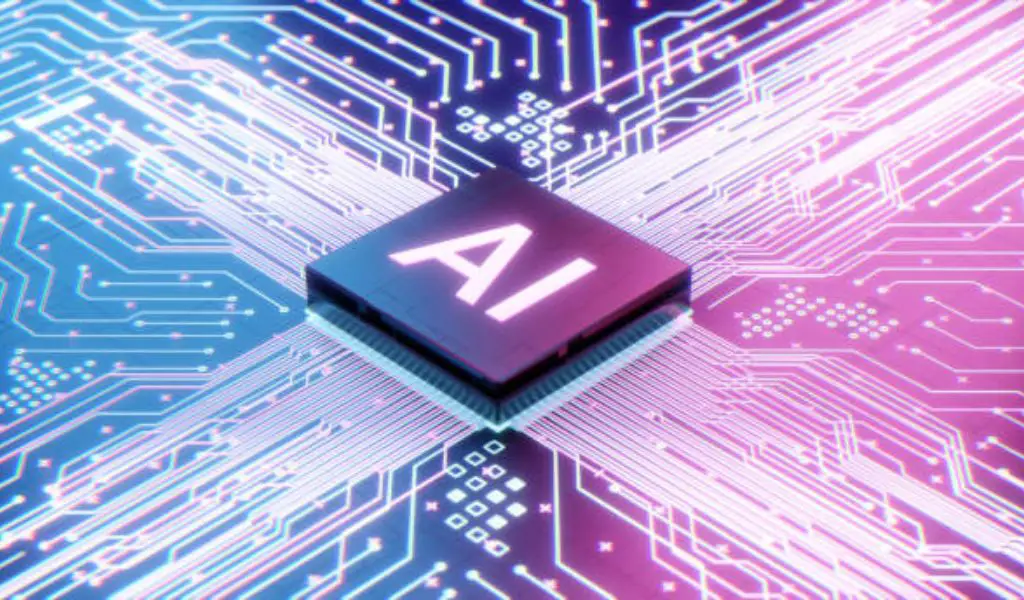A simple-looking piece of silicon that is connected to the circuitry that controls the images in video games is the latest in technology today. This AI chip was created for the express purpose of making ChatGPT and other AI systems faster and more affordable.
These chips have suddenly become the focus of what some experts perceive as an AI revolution that has the potential to transform not just the tech industry, but perhaps even the entire planet. Last Thursday, as the company anticipated a significant increase in revenue that experts said reflected a rise in sales of its products, shares of Nvidia, the leading designer of artificial intelligence chips, soared about 25%. %. There was a temporary rise in the company’s value above $1 trillion on Tuesday.
So what are AI chips?
Answering that question is difficult. “There really isn’t a fully agreed definition of AI chips,” said Hannah Dohmen, a research analyst at the Center for Security and Emerging Technology.
However, the word generally refers to computational equipment that has been designed to handle AI workloads, for example “training” AI systems to tackle challenging problems that would otherwise overwhelm traditional computers.
Origins of video games
In 1993, three businessmen founded Nvidia with the goal of advancing computer graphics. Within a few years, the company had created a new chip known as a graphics processing unit, or GPU. By performing numerous complicated graphical calculations simultaneously, the GPU greatly accelerated both the creation and play of video games.
Both video games and artificial intelligence (AI) would grow using this method, formally called parallel processing. With much lower error rates than rivals, two University of Toronto graduate students implemented a GPU-based neural network to win the prestigious ImageNet AI competition in 2012.
The win sparked interest in AI-related parallel computing, creating a new market for Nvidia and its competitors while giving academics effective tools to advance the field of artificial intelligence.
Modern AI chips
After eleven years, Nvidia remains the leading processor manufacturer for creating and improving AI systems. 80 billion transistors are contained in one of its latest products, the H100 GPU, which is around 13 million more than Apple’s latest high-end processor for the MacBook Pro laptop. Unsurprisingly, the cost of this technology is high; the H100 lists for $30,000 in an online store.
To make these intricate GPU chips, Nvidia would have to spend heavily on new plants. Instead, it relies on Asian chipmakers such as Samsung Electronics in Korea and Taiwan Semiconductor Manufacturing Co.
Cloud computing services like those provided by Amazon and Microsoft are some of the biggest consumers of AI chips. These services allow smaller companies and organizations that could not afford to build their own AI systems from scratch to use cloud-based technologies to help with activities that can range from drug discovery to customer management through renting out its AI computing power.
Other uses and competition
Outside of AI, parallel processing has various applications. For example, a few years ago Nvidia graphics cards were in short supply because cryptocurrency miners, who assemble banks of computers to solve challenging math puzzles in exchange for bitcoin payments, had taken over most of them. When the bitcoin market crashed in the early years of 2022, that problem abated.
According to analysts, Nvidia would certainly face a more challenging rivalry. Advanced Micro Devices, which competes with Nvidia in the market for computer graphics chips, is a possible rival. AMD has recently taken steps to improve its own line of AI processors.
Santa Clara California is the home of Nvidia. Jensen Huang, co-founder, remains the company’s president and CEO.
Subscribe to our latest newsletter
To read our exclusive content, sign up now. $5/month, $50/year
Categories: Technology
Source: vtt.edu.vn
